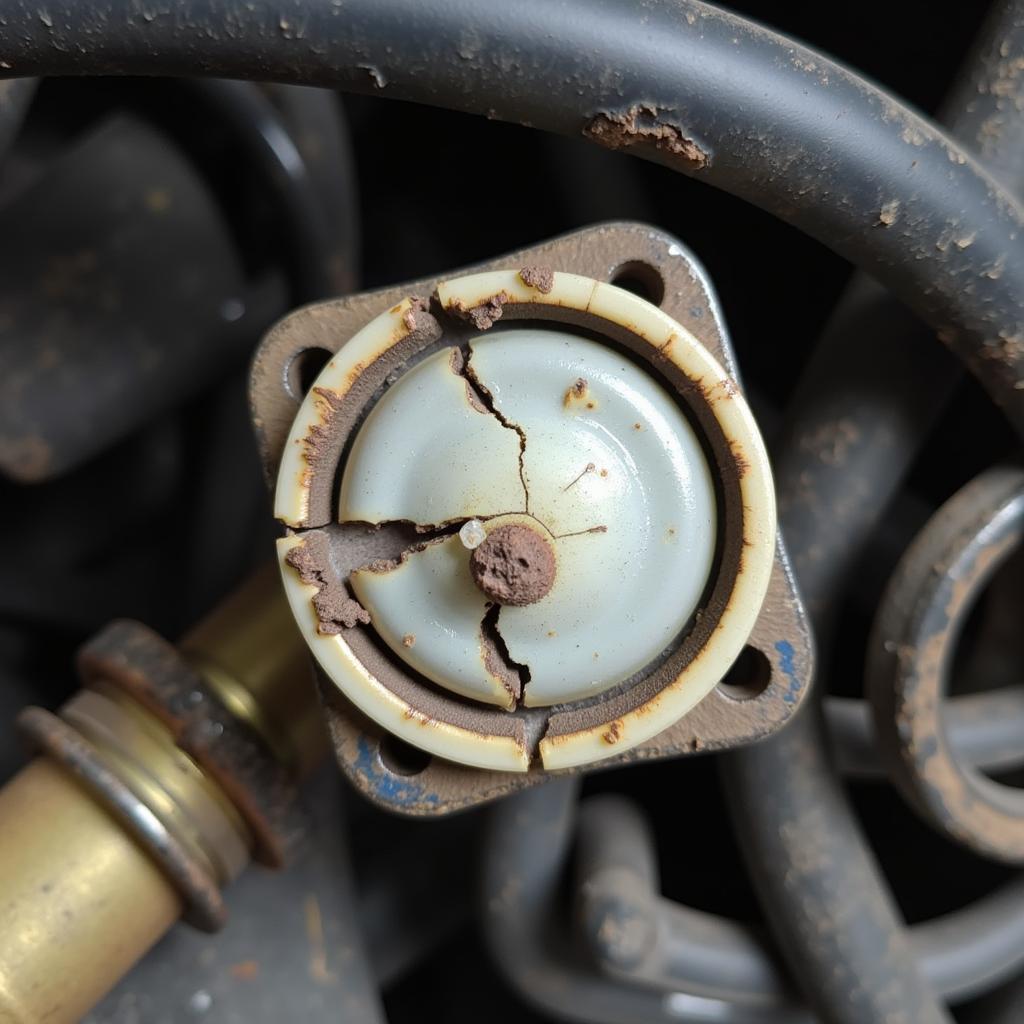Your cart is currently empty!

Demystifying the Ross Tech Code P0131: Oxygen Sensor Circuit Slow Response (Bank 1, Sensor 1)
If you’re facing the dreaded “Check Engine” light and your Ross-Tech scanner reveals the cryptic code P0131, don’t panic. This common code, indicating a slow response from your oxygen sensor (O2 sensor), can be diagnosed and often fixed without a trip to the mechanic. This comprehensive guide will walk you through understanding, troubleshooting, and resolving the Ross Tech code P0131, empowering you to take control of your car’s health.
Understanding Oxygen Sensors and the P0131 Code
Before delving into the specifics of the P0131 code, it’s crucial to understand the vital role oxygen sensors play in your car’s engine management system. These sensors, typically located in the exhaust manifold or near the catalytic converter, constantly monitor the oxygen content in the exhaust gases. This data is relayed to the engine control unit (ECU), which uses it to adjust the air-fuel mixture for optimal combustion and reduced emissions.
The P0131 code specifically points to a problem with the oxygen sensor located before the catalytic converter on Bank 1 (the side of the engine with cylinder #1) and Sensor 1 (the sensor upstream of the catalytic converter). A “slow response” implies that the sensor is taking longer than usual to detect changes in oxygen levels, signaling a potential issue with its performance.
Common Causes of the Ross Tech Code P0131
Several factors can contribute to a slow response from your oxygen sensor, triggering the P0131 code. These include:
- Aging or Faulty Oxygen Sensor: Over time, the sensor’s internal components can deteriorate, leading to sluggish responses and inaccurate readings.
- Exhaust Leaks: Leaks in the exhaust system, particularly before the oxygen sensor, can introduce fresh air, disrupting the sensor’s ability to accurately measure oxygen levels.
- Wiring Problems: Damaged, corroded, or loose wiring connections between the sensor and the ECU can disrupt signal transmission, causing a slow response.
- Vacuum Leaks: Leaks in the engine’s vacuum system can alter the air-fuel mixture, impacting the oxygen content in the exhaust and confusing the sensor.
- Faulty Fuel Pressure Regulator: An incorrect fuel pressure can lead to a rich or lean fuel mixture, affecting the sensor’s readings.
 A close-up of a damaged oxygen sensor
A close-up of a damaged oxygen sensor
Diagnosing the Ross Tech Code P0131
Accurately diagnosing the root cause of the P0131 code is essential for implementing the right solution. Here’s a step-by-step guide to help you troubleshoot:
- Visual Inspection: Begin by visually inspecting the oxygen sensor and its wiring harness for any obvious signs of damage, such as burns, breaks, or loose connections.
- Check for Exhaust Leaks: Inspect the exhaust system, particularly the area around the oxygen sensor, for any leaks. Listen for hissing sounds or visually inspect for soot deposits, which can indicate a leak.
- Inspect Vacuum Lines: Examine the vacuum lines connected to the intake manifold and other engine components for any cracks, loose clamps, or signs of deterioration.
- Test Fuel Pressure: Use a fuel pressure gauge to check the fuel pressure at the fuel rail, ensuring it falls within the manufacturer’s specifications.
- Advanced Diagnostics: If the above steps don’t reveal the issue, further diagnostic tests using a digital multimeter or an advanced scan tool may be necessary to test the sensor’s voltage output and resistance.
 A mechanic checking the wiring of an oxygen sensor
A mechanic checking the wiring of an oxygen sensor
Resolving the Ross Tech Code P0131
Once you’ve pinpointed the cause of the P0131 code, you can proceed with the appropriate repair solution. Here are the common fixes:
- Oxygen Sensor Replacement: If the sensor itself is faulty or aging, replacement is the most effective solution.
- Exhaust Leak Repair: Address any exhaust leaks by tightening clamps, replacing gaskets, or repairing damaged sections of the exhaust pipe.
- Wiring Repair: Repair or replace any damaged, corroded, or loose wiring connections between the oxygen sensor and the ECU.
- Vacuum Leak Repair: Replace cracked or deteriorated vacuum lines and ensure all connections are secure.
- Fuel Pressure Regulator Replacement: If the fuel pressure is out of specification, replace the faulty fuel pressure regulator.
“In my experience, a faulty oxygen sensor is the most frequent culprit behind the P0131 code. However, it’s crucial to perform a thorough diagnosis to avoid unnecessary part replacements.” – John Miller, ASE Certified Master Technician
Conclusion
The Ross Tech code P0131, while initially alarming, is a manageable issue with proper diagnosis and repair. Understanding the role of oxygen sensors and following the troubleshooting steps outlined in this guide can help you identify and resolve the underlying problem, ensuring optimal engine performance and emissions control. If you’re uncomfortable performing these repairs yourself, don’t hesitate to seek the assistance of a qualified mechanic.
Need help with your Ross Tech code P0131 or other automotive issues? Contact us at +1 (641) 206-8880 and our email address: vcdstool@gmail.com or visit our office at 6719 W 70th Ave, Arvada, CO 80003, USA. Our team of expert technicians is here to assist you.
by
Tags:
Leave a Reply